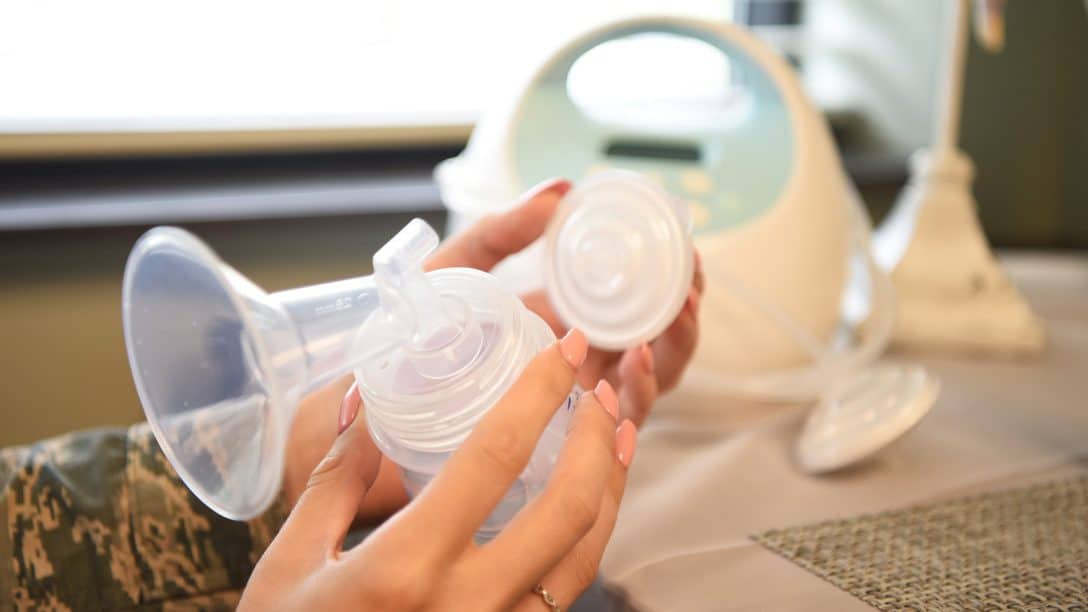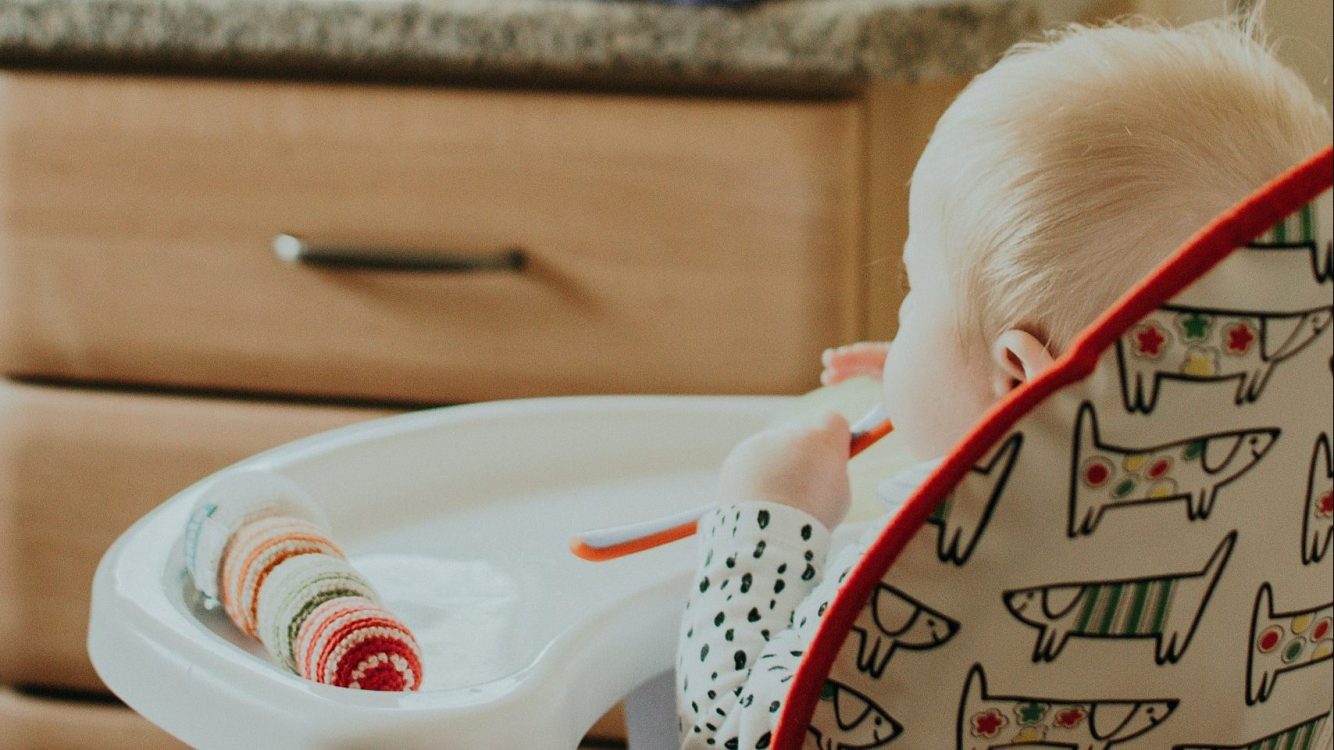Mothers have been breastfeeding their babies since time began. It’s been proven time and again, that this is the best way for a mother to give her baby a healthy start in life. While the act of breastfeeding comes naturally to most moms, there are times when mothers find it hard to feed their newborn babies.
One of the main reasons why some mothers give up on breastfeeding is when their babies are unable to latch on properly at feeding times. Although this is frustrating for both mom and baby, there are effective ways to overcome this.
Page Contents
- 1 Why is a good latch important?
- 2 Tips for the perfect breastfeeding latch
- 3 Hold your baby close to you
- 4 Get your baby to open her mouth wide
- 5 Concentrate on your baby’s lower lip
- 6 Watch and listen while you feed your baby
- 7 Check your nipple after your baby has fed
- 8 Breastfeeding is good for moms too!
- 9 The Bottom Line

Why is a good latch important?
“Latch” is the term that refers to the position of a baby’s mouth on its mother’s breast when it is feeding. When the baby latches on properly, the mother experiences no pain or other issues, and the baby’s hunger is satisfied.
Despite breastfeeding being the most natural way to feed a baby, there are times when latching on is hard for both mom and baby. In fact, it often takes the mother and baby time, practice, and plenty of patience until they get it right.
Getting the latching right can be daunting and confusing in the first few days after giving birth, especially since the breastfeeding professionals have their own tips and ways to get it right. If you are having a hard time getting your baby to latch on properly, and you are getting bombarded with advice from all sides, then choose the methods that are comfortable for you and your baby and give the results you are looking for.
If you experience pain when you are feeding your baby, especially in the first two weeks after giving birth, then there is something wrong. If your baby is not latching on properly, then he/she will not be able to get milk from the breast and will not gain weight.
Tips for the perfect breastfeeding latch
There are several methods of breastfeeding, but the most important thing is that you find those that work the best for both you and your baby. For instance:
Use a position that’s comfortable – it is essential that you and your baby are perfectly comfortable at feeding time, so make sure that:
• Your baby neck, head, and spine are not bent
• Your baby’s chin is tilted upwards and presses against your breast,
• You have plenty of pillows and cushions around you to use as support for your arms, back, and/or your baby
Hold your baby close to you
Hold your baby close to you– at feeding time, make sure that your nipple is in line with your baby’s nose, and hold him/her close, with your tummies touching. With your baby in this position, his/her nose will be tilted up slightly, allowing him/her to breathe freely while learning how to coordinate breathing and sucking simultaneously.

Get your baby to open her mouth wide
Babies are born with a “rooting reflex” that is triggered when the corner of their mouth is touched or stroked. This helps the baby to find the breast or bottle at feeding time. If you use your nipple to gently touch or stroke your baby’s mouth, it will trigger the rooting reflex, and get your baby to open his/her mouth wide, which will make it easier for him/her to latch onto your breast properly.
The trick is to get your baby to take your nipple and a big portion of your areola into his/her mouth. You can help your baby to do this by taking your breast between a “C” shape that you make with your thumb and forefinger, and then squeezing your thumb and forefinger together to flatten that part of your breast. This will allow your baby to take in enough of your breast to feed and have enough space for him/her to breathe freely during the feed.
Concentrate on your baby’s lower lip
It is essential that you pay special attention to your baby’s bottom lip as he/she is latching on. The first part of your baby’s mouth that touches your breast at feeding time, should be his/her bottom lip. This is basically the same as you do when you eat a sandwich – your bottom lip touches the sandwich first, then you bite down with your top jaw. This is precisely what should happen when you breastfeed your baby.
So, when you’re preparing to feed your baby, make sure that his/her bottom lip is positioned at the edge of the areola first, and then the rest of his/her mouth covering your nipple and most of the areola.

Watch and listen while you feed your baby
Watch and listen while you feed your baby – your baby will start sucking as soon as he/she is latched on. You will notice that your baby’s first few sucks are short and in quick succession, so as to stimulate the let-down reflex that gets your milk flowing freely. When this happens, your baby will start sucking a lot slower and deeper, with pauses every so often. Your baby’s jaw will start moving rhythmically, and he/she will make sucking noises and swallowing motions during the feed.
You will know that your baby is not latched on properly, or if he/she isn’t lying comfortably if you hear smacking or clicking sounds. There could be other reasons as to why your baby is unable to latch on properly, so it would be a good idea to turn to your doctor or a breastfeeding expert for help. Other signs that your baby is not feeding correctly, are poor weight gain and insufficient pee and poo output.
Check your nipple after your baby has fed
when your baby is finished nursing at your one breast, look at your nipple. If it is round or still looks like your other nipple, then it means that your baby had a good, deep latch. If, however, t is creased, pinched, or flattened, then you need to change things slightly to get a better latch.
This would be a good time to see that your baby’s bottom lip is correctly positioned at the edge of the areola, rather than at the base of your nipple!

Breastfeeding is good for moms too!
It is a known fact that babies benefit enormously from breastfeeding, but did you know that mothers benefit too? Breastfeeding mothers, for instance:
• Lose excess weight faster after giving birth by burning around 500 calories per day to build their milk supply
• Experience less postpartum bleeding
• Have less chance of contracting anemia
• Experience fewer infections of the urinary tract
• Breastfeeding results in the mother’s uterus contacting sooner and returning to its normal size
So, if there’s a good latch when you feed your baby, you can rest assured that it’s not just your baby that is benefitting from it, but you as well!

The Bottom Line
It’s all very well reading about mastering the art of getting your baby to latch on properly, but actually seeing how it’s done goes a long way to make breastfeeding perfect for you and your baby! There are many videos to watch that explain visually, what a correct latch looks like, as well as a few great tips about breastfeeding new-born babies.


